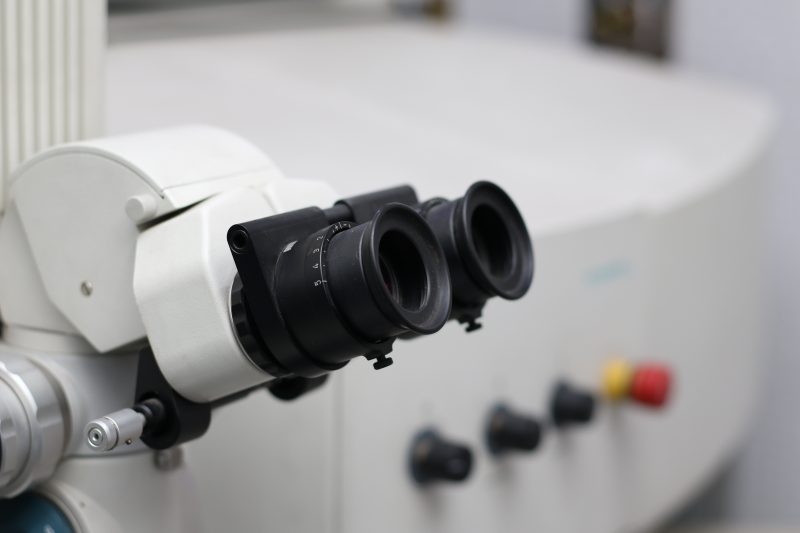Inside Quantum Technology’s “Inside Scoop:” Quantum and Microscopy

Quantum science and microscopy are powerful fields that have made remarkable advancements independently. However, their convergence in recent years has opened new frontiers in scientific exploration. Quantum science has brought forth revolutionary concepts and technologies, while microscopy has allowed scientists to delve deeper into the microscopic world. Physicists have begun to leverage various quantum phenomena, such as entanglement, to better microscopes. This process, known as quantum microscopy, could significantly contribute to various scientific endeavors.
Advancements in Microscopes
Microscopy has long been a vital tool in scientific research, enabling us to observe and analyze objects at the nanoscale. Traditional microscope techniques, such as optical and electron microscopy, have provided valuable insights into various scientific disciplines. However, the advent of quantum science has pushed the boundaries of microscopy even further.
Quantum Microscopy:
Quantum microscopy, an emerging field at the intersection of quantum science and microscopy, leverages the principles of quantum mechanics to enhance imaging capabilities. One key quantum phenomenon in this field is entanglement, where two or more particles become intrinsically linked, irrespective of their separation.
Entanglement-based microscopy techniques, such as quantum ghost imaging and quantum metrology, have revolutionized how we gather information about microscopic objects. Quantum ghost imaging allows the reconstruction of an image by correlating two entangled particle streams—one interacting with the object and the other serving as a reference. This technique enables imaging even when the object is not directly illuminated, opening doors to new possibilities in non-invasive imaging.
On the other hand, quantum metrology employs entanglement to surpass the limitations imposed by classical measurements. Researchers can achieve higher precision in parameter estimation by utilizing entangled quantum states. This breakthrough can significantly enhance the resolution and accuracy of microscopy techniques, providing unprecedented detail about the properties of microscopic structures.
Microscopy in Quantum Science
While quantum science has helped to advance microscopes, microscopy has also helped to advance certain aspects of quantum science. Quantum systems are inherently complex and challenging to observe directly. However, with the aid of microscopes, scientists have been able to visualize and manipulate individual quantum particles, such as atoms and ions. This capability has allowed researchers to study quantum phenomena in a controlled environment, leading to breakthroughs in quantum computing, quantum simulations, and quantum information processing.
Microscopy techniques have also enabled the investigation of quantum phenomena, such as quantum entanglement, superposition, and quantum coherence. By directly observing and measuring these phenomena, scientists can validate theoretical models, test fundamental principles of quantum mechanics, and explore novel quantum effects. This more profound understanding of quantum physics has paved the way for developing quantum technologies and applications.
Additionally, microscopy can play a role in advancing quantum sensing. Quantum sensors, including those based on microscopy principles, have opened new avenues for precise measurements in quantum physics. These sensors utilize quantum states and interactions to detect and characterize physical quantities with exceptional sensitivity. For instance, quantum microscopes equipped with single-photon detectors have been employed to detect extremely weak light signals, enabling the observation of faint quantum phenomena.
The convergence of quantum science and microscopy has propelled both fields to new heights, facilitating breakthroughs in our understanding of the quantum realm. Quantum microscopy techniques, leveraging the power of entanglement and quantum phenomena, have expanded our imaging capabilities and improved measurement precision. Simultaneously, microscopes have played a pivotal role in advancing quantum physics by visualizing quantum systems, probing quantum phenomena, and enabling high-sensitivity quantum sensing and imaging. As this symbiotic relationship continues to evolve, we can expect further advancements that will benefit various industries.
Kenna Hughes-Castleberry is a staff writer at Inside Quantum Technology and the Science Communicator at JILA (a partnership between the University of Colorado Boulder and NIST). Her writing beats include deep tech, quantum computing, and AI. Her work has been featured in Scientific American, New Scientist, Discover Magazine, Ars Technica, and more.



















